Search results
Iceland: Genealogy with a Twist
November 23, 2012 by ramona
Filed under Articles, Genealogy and Immigration, Latest News
 Most people are interested in genealogy as a hobby, an addictive search for a family tree whose roots are yet undiscovered.
Most people are interested in genealogy as a hobby, an addictive search for a family tree whose roots are yet undiscovered.
In Iceland however, genealogy takes on a broader importance. It becomes a necessity for singles with the natural desire to settle down and perhaps start a family.
Why… because with a current population of about 318,000 people whose ancestors have lived on this isolated island since the late Viking age (approximately the year 870) finding someone you are not closely related to can become a daunting task.
Not to worry, Icelanders have come up with a solution to the problem that gives a unique slant to genealogy research.
The Islendingabok
Their solution: the Islendingabok, an online genealogical database that holds the ancestral information of Iceland’s inhabitants going back 1,200 years. The Íslendingabók combines the science of medical genetics and some major software, with the aim of tracing the family relationships of the countries citizens since the time of settlement. It also uses techniques more familiar to family history research: such as church and census records.
The database allows Icelanders to make certain they are not about to become kissing cousins: however, it is in Icelandic only.
Icelandic Immigration
Although many descendants of Iceland’s original settlers stayed, there were also those who immigrated to North America.
Iceland near the end of the 19th century was a land of stark beauty. It was also a land of overwhelming hardships stemming from conditions of over population, economic adversity, violent volcanic eruptions and extreme cold. It was at this time that even some of the staunchest Icelanders left in search of greener pastures.
However, Icelandic nationalism remains as strong as the stories of home. Generations later, some Icelandic ex-pats feel the pull of heimthrá, or being in thrall of home. For descendents of those immigrants, there is a wealth of information concerning Icelandic genealogy on Hálfdan Helgason’s site dedicated to the Icelandic Emigration to North America.
More links to Icelandic genealogy can be found here…but before you go remember to download your FREE Family Tree Starter Kit available with your 30-day free trial to Genealogy Beginner.
Medieval Scottish Roots
September 4, 2012 by ramona
Filed under Articles, Genealogy Research Resources, Latest News, Sharing Genealogy Information
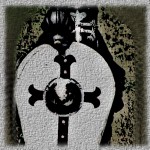 If you are ready to start digging for ancestors that go way-way back …all the way, back to medieval times on the British Isles.
If you are ready to start digging for ancestors that go way-way back …all the way, back to medieval times on the British Isles.
Here is a website that you should put at the top of your family history list.
People of Medieval Scotland is an amazing database containing 8600 records. This database consists of all known people of Scotland from 1093 to 1314 and it is the culmination of two projects funded by the Arts and Humanities Research Council.
The Projects
The Paradox of Medieval Scotland is a study of the social relationships before the wars of independence. This will be riveting for those who have traced their British ancestry back to Anglo-Norman origins. The information drawn from over 6000 charters provides biographical data for all known Scottish peoples between 1093 and 1286.
The Breaking of Britain is concerned with the period extending from Alexander II’s attempted revival to the abolition of cross border, land holding by Robert the Bruce.
The Database
The database as a whole is a collection of information on every known individual mentioned in documents relation to Scotland between the death of Malcolm III in 1093 to Robert the First’s parliament in Cambuskenneth in 1314. What makes this database so special is that it is based on the relationships between the people named in the documents.
The next feature that separates this database from so many others is the database tutorial, which makes navigating it easy…even for a genealogy beginner. Searching the database can be done using a broad base of criteria such as Institutions, factoids, people, sources, relationships, transactions and terms of tenure.
For example, a search for the surname Sinclair under the “Factoid” search returns a list of Sinclair’s by name ranging from 1093-1314. Clicking on one these will bring up a pop up box that gives you a short biography and an option to view the full record. Choosing to view the full record will move you to page with a total number of associated factoids such as:
Transaction factoids: Lists transactions such as gifts of land, general correspondence, oaths of fealty and much more
Relationship Factoids: Names relationships connected to the individual, for instance both familial and guardianships
Title Factoids: Lists all titles and offices held by the individual
Witness Factoids: Documents on which the individual is listed as a witness
Family Tree
After browsing through the available documents users also have the option of looking at the listed family tree for the individual. Under my Sinclair search, I found the family tree for the line on a tab at the top of the page. Clicking on this menu item the family tree listed three trees in which this individual could be found: Scottish Royal Family, Earl David descendants, English royal family and Manx royal family.
Although the database covers all territory, which was to become part of Scotland prior to the death of Alexander III, those looking for specific genealogy information on individuals from Orkney or Shetland will be disappointed if they try a geographic search, However if you know who your ancestors are from those areas there certainly is a great deal of information included.
The last two points that should convince you to put this site in your favorites is that the database is free and there is no need to register to use it.
Before you head off to visit this amazing website, be sure to download your free Family Tree Charts, available with your 30-day free trial membership to genealogybeginnner.com.
Family Search adds even more New Records for 2012
August 26, 2012 by ramona
Filed under Articles, Latest News
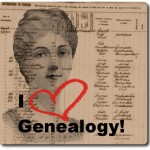 With the 1940s, Census indexing project finished you might think the team at FamilySearch.org would want to take a little rest. They certainly deserve one!
With the 1940s, Census indexing project finished you might think the team at FamilySearch.org would want to take a little rest. They certainly deserve one!
Instead, they are still busy adding new records and updates.
For the month of August 2012, they have added 50 sets of new records and updates covering North America, South America, Great Britain, Europe and more.
Among the new additions are court papers, cemetery transcriptions, obituaries, immigration information, probate records, passenger lists, mortality schedules, civil war records, census and civil registrations as well as marriage, birth, baptism and death records.
Here is a list of new records thus far this month:
New Additions and Updates at Family Search: August 2012 |
Images Included |
Date Added |
| Alabama, Jefferson County Circuit Court Papers, 1870-1916 |
YES |
14 Aug 2012 |
| Alabama, Sumter County Circuit Court Files, 1840-1950 |
YES |
20 Aug 2012 |
| California, San Mateo County Records, 1855-1991 |
YES |
14 Aug 2012 |
| Idaho, Obituaries, 2007 |
YES |
14 Aug 2012 |
| Illinois, Cemetery Transcriptions, 1853-2009 |
YES |
14 Aug 2012 |
| Illinois, County Naturalization Records, 1800-1962 |
YES |
7 Aug 2012 |
| Indiana, Marriages, 1811-1959 |
NO |
16 Aug 2012 |
| Kentucky, Probate Records, 1792-1977 |
NO |
17 Aug 2012 |
| Maine, County Naturalization Records, 1800-1990 |
YES |
10 Aug 2012 |
| Maryland, Probate Estate and Guardianship Files, 1796-1940 |
NO |
15 Aug 2012 |
| Montana, Yellowstone County Records, 1881-2011 | 16 Aug 2012 | |
| New Hampshire, County Naturalization Records, 1771-2001 |
YES |
15 Aug 2012 |
| New Jersey, Probate Records, 1678-1980 |
YES |
15 Aug 2012 |
| New York, New York Passenger and Crew Lists, 1925-1942 |
YES |
22 Aug 2012 |
| Ohio, Births and Christenings, 1821-1962 |
NO |
24 Aug 2012 |
| Ohio, County Births, 1856-1909 |
NO |
24 Aug 2012 |
| Ohio, County Marriages, 1789-1994 |
NO |
16 Aug 2012 |
| Ohio, Jefferson County Court Records, 1797-1940 |
YES |
23 Aug 2012 |
| North Carolina, Estate Files, 1663-1979 |
NO |
2 Aug 2012 |
| Texas, Deaths (New Index, New Images), 1890-1976 |
NO |
11 Aug 2012 |
| Texas, Deaths, 1977-1986 |
NO |
21 Aug 2012 |
| United States Census (Mortality Schedule), 1850 |
NO |
23 Aug 2012 |
| United States Census, 1850 |
NO |
23 Aug 2012 |
| United States Census, 1940 |
NO |
18 Aug 2012 |
| United States Social Security Death Index |
NO |
17 Aug 2012 |
| United States, Civil War Widows and Other Dependents Pension Files |
NO |
15 Aug 2012 |
| United States, World War One Draft Registration Cards, 1917-1918 |
NO |
8 Aug 2012 |
| Quebec Notarial Records, 1800-1900 |
YES |
22 Aug 2012 |
South America |
||
| Chile, Santiago, Cementerio General, 1821-2011 |
YES |
15 Aug 2012 |
| Mexico, Baptisms, 1560-1950 |
NO |
24 Aug 2012 |
| Mexico, Marriages, 1570-1950 |
NO |
24 Aug 2012 |
| Peru, Amazonas, Civil Registration, 1939-1995 |
YES |
20 Aug 2012 |
| Peru, La Libertad, Civil Registration, 1903-1998 |
YES |
15 Aug 2012 |
| Peru, Lima, Civil Registration, 1874-1996 |
NO |
21 Aug 2012 |
| Philippines, Civil Registration (Archives Division), 1902-1945 |
YES |
14 Aug 2012 |
| Portugal, Braga, Catholic Church Records, 1530-1911 |
YES |
21 Aug 2012 |
| Portugal, Castelo Branco, Catholic Church Records, 1714-1911 |
YES |
15 Aug 2012 |
| Portugal, Viseu, Catholic Church Records, 1523-1989 |
YES |
21 Aug 2012 |
Eastern Europe |
||
| Czech Republic, Land Records, 1450-1889 |
YES |
15 Aug 2012 |
| Hungary, Civil Registration, 1895-1980 |
YES |
9 Aug 2012 |
| Poland, Roman Catholic Church Books, 1600-1950 |
NO |
24 Aug 2012 |
Western Europe |
||
| Italy, Torino, Civil Registration (State Archive), 1802-1813 |
YES |
6 Aug 2012 |
| Italy, Vicenza, Casoni, Parocchia di San Rocco, Catholic Church Records, 1597-1941 |
YES |
17 Aug 2012 |
| Spain, Consular Records of Emigrants, 1808-1960 |
YES |
6 Aug 2012 |
| Spain, Cádiz, Civil Registration Records, 1870-1960 |
YES |
20 Aug 2012 |
| Spain, Province of Barcelona, Municipal Records, 1583-1902 |
YES |
22 Aug 2012 |
| Sweden, Södermanland Church Records, 1604-1900; index 1640-1860 |
NO |
2 Aug 2012 |
Great Britain |
||
| England, Northumberland, Miscellaneous Records,1570-2005 |
YES |
15 Aug 2012 |
| Great Britain, Births and Baptisms, 1571-1977 |
NO |
21 Aug 2012 |
Australia & New Zealand |
||
| New Zealand, Probate Records, 1878-1960 |
YES |
14 Aug 2012 |
Before you dive into all of these new family history records make sure you are prepared to record all of the new information. On your free Research Tracking Forms and Family Tree Charts: available with your 30-Day FREE TRIAL MEMBERSHIP to Genealogy Beginner.
Finding Your Ancestors in Trades Union Records
August 23, 2012 by ramona
Filed under Articles, Genealogy Occupational Records, Genealogy Records 101, Latest News
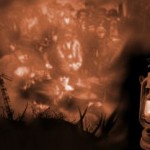 One of the very first things you learn as a genealogy beginner is to look in birth, marriage, death and census records for clues to uncovering your ancestral past. Then you learn about land records, sasines and other records associated with genealogy.
One of the very first things you learn as a genealogy beginner is to look in birth, marriage, death and census records for clues to uncovering your ancestral past. Then you learn about land records, sasines and other records associated with genealogy.
One often overlooked source of information for your family tree are trades union records.
The trade your ancestor worked in may hold valuable information. For example, the record of a tradesman can help you find an ancestor who has disappeared from the record or help you fill in the blanks of, where, when and why they changed locations between census. Quite often trades ran in families and you may even find generations of records if you are lucky.
For family history hunters with ancestors from the UK one record source you may want to track down is The Modern Records Centre. This unique resource is not genealogy specific nevertheless; they do have a number of collections that are genealogy gold.
The Modern Records Centre collection includes information on UK trade union employers that work as guide to help find specific records for individuals.
Some of the trades they cover include:
Blacksmiths, Forge & Smithy Workers
The Scottish United Operative Blacksmiths’ Protective and Friendly Society was recognized on 24 August 1857: records held in this collection are general registration books, 1857-1924. These records hold information on individuals however to find an individual you will need either their membership number or the year they joined the union. Another great resource in this collection is the monthly, quarterly and annual/financial reports (1858-1961). This set of records includes lists of deceased members and their spouses.
Joiners
The Amalgamated Society of Carpenters and Joiners/Amalgamated Society of Woodworkers hold membership records in three series. To find information on individual members you will need to know the branch to which your ancestor belonged.
· What the collection contains and what you can hope to find:
· Admission books (1895-1931): Your ancestors name, age when admitted, number of years in the trade, the date he was admitted, his marital status, if he recieved funeral benefits, excluded members and if he was transferred between branches.
· Registration books (1901-1921): Some of the information included are name, age when admitted, date admitted, marital status, date of marriage and name of branch, any benefits received and date of death or exclusion from the union.
· Reference books (1901-1921): The reference books contain lists of members in 1901, 1911 and 1921 that had transferred in another place.
· Annual reports (1920-1971): The most interesting thing about the Annual reports is that they contain obituaries of several members.
Railwaymen
There are several unions for railwaymen with records dating from so it will be very helpful to know exactly which union your ancestor was a member of. In spite of this, the collection has some of the richest genealogical holdings.
Annual reports of the Orphans Fund (1889, 1893-1912):
These records hold the details of payments made to the children of deceased members. To research the collection you will need to know the year(s) benefit were granted.
Record of accidents, inquests, Board of Trade enquiries, and legal cases (1901-1907):
This collection is indexed by branch and arranged in chronological order. It contains information on accidents and inquests and can tell you the date ,place and nature of an accident along with whether or not any compensation was paid or the outcome of an inquest. Researchers will need to know an approximate date of accident as well as the member’s branch.
The Modern Records Centre also holds union records for Boilermakers, Bookbinders, Bricklayers, Gilders, Ironfounders, Papermakers, Printing Workers, Quarrymen, Seamen, Shipwrights & Shipbuilders, Stonemasons and Telegraphists among many others.
Before you head off to research your ancestors trades take advantage of genealogybeginner.com’s 30-day free trial membership and download your Family Tree Charts and Research Tracking Forms today.
A Family History of Chivalry
August 20, 2012 by ramona
Filed under Articles, Family History, Latest News
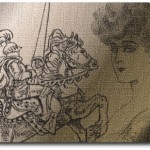 One of the most enjoyable things about researching your family history is learning about some lesser-known historical facts. This can be even more exciting when you discover that your ancestors had a part to play.
One of the most enjoyable things about researching your family history is learning about some lesser-known historical facts. This can be even more exciting when you discover that your ancestors had a part to play.
For example, it can be a thrilling moment when you discover that there was a knight in your family tree.
It can be a bit of a surprise if you find out that the knight was a woman.
During the middle ages, there were several orders of knighthood for women such as:
The Order of the Hatchet
Founded by the Count of Barcellona in 1149, The Order of the Hatchet honored the women who fought against the Moors in defense of the town of Tortosa. The Order granted the lady knights precedence over men at public assembly as well as an exemption from taxes.
The Order of the Glorious Saint Mary
Loderigo d’Andalo, an Italian nobleman from the town of Bologna founded The Order of the Glorious Saint Mary in 1233. Later approved by Pope Alexander IV in 1261, this was the first of the religious orders of knighthood granted to women.
The Order of the Garter
The Order of the Garter was granted to 68 women between the years 1358 and 1488. Many of the women appointed to this order were wives of knights of the order or those of noble blood: although, there were members who were neither. A symbol of the Knights of the Garter is a garter worn upon the left arm; many such are seen on the headstones of those inducted into the order.
The term for a woman who has been knighted is “Dame”.
If you find this title associated with one of your ancestors it will be because she belonged to an order of chivalry. Often these titles are only held for life and are not hereditary.
To learn more about medieval genealogy visit The Foundation for Medieval Genealogy but first remember to download your Family Tree Chart available with your 30-day free trial to Genealogy Beginner
Is There Gold in your Family Tree?
August 14, 2012 by ramona
Filed under Articles, Genealogy Research Resources, Latest News, Sharing Genealogy Information
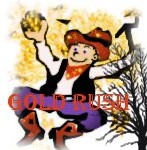 One of the most enjoyable things about climbing your family tree is discovering ancestors who were involved in one of histories great events.
One of the most enjoyable things about climbing your family tree is discovering ancestors who were involved in one of histories great events.
August 16th marks the anniversary of the Klondike Gold Rush and any genealogy beginner that descends from one of the miners or “Stampeders” who set off to strike it rich in 1897 needs to know about Yukon GenWeb.
The Yukon GenWeb is a compilation of free genealogy resources loaded with links and information to all things related to the “last great gold rush”. Their resources include a listing of related Archives & Libraries, Books and Publications, Yukon Cemeteries, Census Returns, Church Records and Registers.
Some of the highlights of their resources include:
- A collection of Directory Records with a link to Ferguson’s 1901 Alaska/Yukon Directory, which lists over 24,200 gold rush participants
- Pioneer Biographies in their Family Records collection
- Relevant First Nations information
- Immigration records including Border Entry, 1908-1918: List of Ports, Dates and Microfilm Reel Numbers
- Passenger Lists, 1865-1922
- Land Titles Records
- Military Records
Before you head off to search for your Gold Rush ancestors make sure you sign up for a 30-day free trial membership to Genealogy Beginner and download your complimentary family tree charts and research tracking forms.
You are going to need them when you start exploring the Pan for Gold Database, North West Mounted Police (NWMP) – Personnel Records, 1873-1904, Manager & Proprietors of Historic Yukon & Alaska Roadhouses, Hotels and Saloons plus so much more!
Gaming for Ancestors
August 7, 2012 by ramona
Filed under Articles, Family History, General Tips, Latest News, Preserving Your Family Tree
 If you are looking for a fun and unusual way to record your family tree you might want to consider playing Family Village.
If you are looking for a fun and unusual way to record your family tree you might want to consider playing Family Village.
Family Village is a facebook game that allows family history hunters to build a family tree in game format. The premise of the game is to invite relatives to play and create a database of ancestors along with living family members by entering their information into the game.
How Does this Create a Database of Ancestors?
The game allows you to go on quests and build a village by entering all the usual types of genealogical information about your ancestors such as birth, marriage and death documents and photos. It allows you to enter immigration information, maps and newspaper articles as well as adding occupations. You can even build avatars of your ancestors.
In their vision statement game developer Finium says that their purpose in developing the game is to provide meaningful games that will aid family tree hunters in preserving their family history.
Family Village is a great way to connect with relatives and get the whole family involved in genealogy.
Genealogy: Online Ethics and Etiquette
July 11, 2012 by ramona
Filed under Articles, Genealogy Standards & Guidelines, Introduction to Genealogy, Latest News
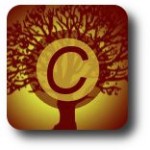 From the novice to the veteran family historian we can all agree that the vast amount of information available online for genealogy research is a great blessing. Therefore, it is more important than ever to become familiar with the ethical practices and etiquette involved in information sharing when it comes to our family trees.
From the novice to the veteran family historian we can all agree that the vast amount of information available online for genealogy research is a great blessing. Therefore, it is more important than ever to become familiar with the ethical practices and etiquette involved in information sharing when it comes to our family trees.
On sites such as Ancestry.com and Find a Grave, a great deal of the information is made available through the contributions of fellow researchers. Thus, it is becoming easier for genealogy beginners to discover documents and photos at the touch of a few keys.
Family Tree Ethics and Etiquette
Published genealogies can be a truly wonderful resource, they aid us in our own research and quite often lead to the discovery of cousins we never knew we had. The down side of this is that through innocent error and sometimes intent, the genealogical community experiences a degree of unethical behavior and bad manners.
It is very exciting to find published information about your ancestors online however, before you snag that birth, marriage, death record or photo of G.G. Grandma:
1. Ask Permission
This is a common scenario on sites like Ancestry.com where photos and records are often public. This is because Ancestry.com is meant to be a collaborative site and although it states in their Community Guidelines that “Any information you post in our community is public and can be copied, modified and distributed by others” you should still ask permission of the original poster.
2. Give Credit
When using published documents or photos always thank the original contributor A little blurb that reads – Photo Courtesy of Ms. Nice Genealogist – is just good manners.
To learn more about this subject check out Genealogy Beginner’s lesson # 1. Genealogy Standards and Guidelines: You Need to Know This First, available with your 30-day free trial membership.
Find a Grave: Free Family Tree Resource
July 5, 2012 by ramona
Filed under Articles, Genealogy Research Resources, General Tips, Latest News, Sharing Genealogy Information
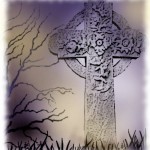 Find a Grave is a FREE genealogical resource that every genealogy beginner should visit and bookmark today.
Find a Grave is a FREE genealogical resource that every genealogy beginner should visit and bookmark today.
Founded in 1995 by Jim Tipton, a self-proclaimed nerd with the odd hobby of searching out and visiting the grave sites of the famous; Tipton’s goal in the creation of the site was to share his interest with like-minded others.
It was not long before he came to the realization that his hobby had great historical and genealogical significance.
What Does Find a Grave Contain?
Filled with memorials this virtual cemetery has listings for:
- North America (by province and state)
- South America
- Europe
- Asia
- Australia and Oceana
- Africa
Not to be forgotten is the “Famous Graves” section that has a comprehensive search field that allows for numerous search types.
It also has some fun categories such as:
Yearly Necrologies: listings of individuals who died during specific times
Posthumous Reunions: a page that lists movies and TV shows with cast members who have passed away. For example when I clicked on the TV show Star Trek, it listed 46 cast members (both guest starts and original crew). For each listing, it gave the date and place of birth and death, a biography that contained many details, cause of death, place of burial and special details.
Interesting Epitaphs: This category is self explanatory and indeed does contain some very interesting epitaphs.
Is it Worth My Time?
The best way to tackle this question is by giving it a test run. For this purpose, I will use three of my ancestors, one from the US, one from Canada and one from Scotland using the broadest search category…surname search.
- U. S. – Undseth: This search did not return any direct line ancestors, however there were a few cousins listed.
- Canada – McCallum: This search found several of my ancestors graves listed in three provinces.
- Scotland – Sinclair: This Search was the most successful and returned numerous family lines from the Orkney Islands.
Find a Grave is most definitely worth your time. In fact, you could easily spend hours and hours searching through the site for burial records to flesh out your family history.
How do I Join?
Joining is easy; simply fill out the online registration and you can immediately begin searching for your ancestors.
Find a Grave is a true genealogy treasure that allows you to not only search for your ancestors but also to contribute to the already huge database. Before you get started, be sure to download your complementary Cemetery Visit Tracking Form available with your free 30-day trail membership to Genealogy Beginner.
Free Genealogy Translation Services
July 2, 2012 by ramona
Filed under Articles, Genealogy Research Resources, Latest News, Sharing Genealogy Information
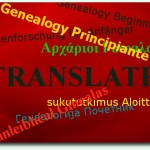 If your ancestors are from Europe, Asia, Russia, South America or another non-English speaking region; you are probably among countless other family tree researchers who will eventually need help translating your genealogy documents.
If your ancestors are from Europe, Asia, Russia, South America or another non-English speaking region; you are probably among countless other family tree researchers who will eventually need help translating your genealogy documents.
Although free online translators have become an abundant resource on the net, when it comes to archaic words, idioms or technical terms they may fall short of expectation.
Live translation services can be costly however; there are some wonderful folks out there who offer genealogy translation services free of charge.
- Linguanaut. Is a site with access to 150 translators, their goal is to connect people in need of a translation with a volunteer translator. To get started just click on Free Translation then choose your language and they will match you up with a translator. (Short non-commercial translations only).
- Freelang: is a fantastic resource with hundreds of volunteers that offers free “short” translations for non-commercial reasons.
To use their service all you need to do is:
- select a language
- select a translator
- fill out their contact form
Your translator will contact you via email with your translation.
- Cucumis: is based on the exchange of services for the benefit of all. This service works on a point system, for example; you can earn points by translating something for another member. However, even if you only speak one language you can still earn points simply by signing up
- WikiTranslation. This site is the simplest to use. All you need to do is fill out their translation request form and someone should get back to you via email.
Of course, there are other language specific services available as well and a quick Google search should give you a list of sites in no time. Happy ancestor hunting.
